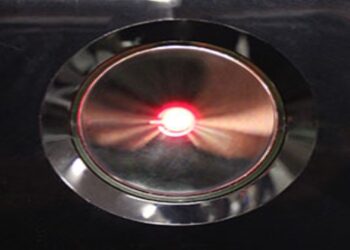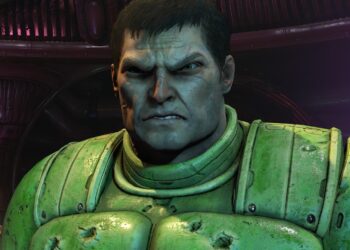Troubleshooting Your Nintendo Wii or Wii U: A No-Nonsense Guide
Your Wii or Wii U giving you trouble? Don’t panic yet! Before abandoning your console, let’s tackle some common issues. This guide helps you get back to gaming. Let’s dive into it and revive your cherished device.
I. Wii U and Wii TV Connection Problems
Black screen when you turn on your Wii or Wii U? Let’s address the TV connection issues first. Usually, it’s a simple fix.
A. Cable Catastrophes
Cables often cause problems. It’s true.
- Check Those Connections: Are your AV cables (red, white, yellow) securely plugged into both the back of your Wii and the right inputs on your TV? Sometimes they become loose. Push them in firmly. Yes, even HDMI cables may need it.
- Cable Swaperoo: Do you have spare AV cables? Or a Wii Component Video Cable? Try swapping them out. Cables can be faulty. If the new cable works, you’ve found the issue.
- Firmware Follies: Rarely, outdated firmware on your TV or console may create problems. Check for updates if you’re stuck. This is critical for HDMI and newer technologies, so cover all bases.
B. Input Inquisition: Are You on the Right Channel?
This seems obvious, but be careful. We have all been there, confused by the wrong input.
- TV Input Source Shenanigans: Your TV remote has an “Input” or “Source” button. Use it! Ensure you’ve selected the appropriate HDMI or AV channel matching the Wii’s connection. Inputs typically carry labels like “AV1,” “Component,” or “Video In.” Check all options.
- The Right Channel is Key: Seriously, verify it. This is often the most common mistake in console troubleshooting.
E. “No Signal” SOS
If your TV shows “No Signal,” we must convince it otherwise.
- Resolution Revolution (Wii Specific): For the original Wii, adjust the TV resolution in the Wii settings. Use the Wii Remote (if connected) or go to “Wii Settings,” next “Screen,” then “TV Resolution.” Explore different options that match your TV and cables. It may be worth trying.
F. Blanking Out? Wake It Up!
If you’re still facing a blank screen, let’s perform a power cycle.
- Power Cycle Potion:
- Power Down: Completely turn off both your Wii U (or Wii) and television.
- TV First: Switch the TV *on first*.
- Patience is a Virtue (15 seconds): Wait 15 seconds for the TV to wake up.
- Input, Please: Select the correct input channel on the TV again.
Igniting the TV before the console can help detect signals properly. It’s tech magic but it works.
II. Wi-Fi Woes: Getting Your Wii/Wii U Online
No internet? No eShop? No multiplayer? Oh no! We need to connect the Wii or Wii U to Wi-Fi and resume digital fun.
A. Router Ruckus: Compatibility and Settings Check
Routers can act finicky. Especially with older devices like the Wii. Ensure they communicate properly.
- 1. 2.4 GHz is the Magic Number (Wii Only): Modern routers often operate on 2.4 GHz and 5 GHz bands. The original Wii only works in the 2.4 GHz lane. Verify that your router broadcasts on 2.4 GHz.
- 2. Router Mode Tango (Wii Specific Again): The Wii prefers “Mixed” (802.11b/g) or “Wireless-B only” network modes. If your router runs on newer modes, it may confuse the console. Adjust it to a compatible mode in settings.
- 3. SSID Spotlight: Is Your Network Hiding?: SSID refers to your network name. If SSID broadcasting is off, your Wii cannot see it. Activate SSID broadcast in router settings to solve this.
- 4. MAC Address Mayhem: The VIP List for Wi-Fi: MAC filtering allows only pre-approved devices to connect. If activated, find your Wii’s MAC address (usually in Internet settings) and add it to the allowed list.
- 5. Security Snafus: WEP vs. WPA2 – A Security History Lesson: Older routers may use WEP security – it’s outdated. Newer routers opt for WPA2-PSK (AES). The Wii can connect to WPA2, but issues may arise. Change router encryption to WPA2 temporarily for easier access.
B. Interference Interruption: Wireless Jams
Wireless signals aren’t magic; they can face disruption.
- Wireless Clutter: Microwaves, cordless phones, Bluetooth gadgets, and thick walls can hinder Wi-Fi signals. Move your Wii closer to the router or away from interference sources to improve connectivity.
- Device Detective: Are other devices using Wi-Fi too? Power off a few devices temporarily to see if it aids your Wii’s connection. It’s worth trying.
C. Troubleshooting Triumvirate: The Classic Steps
If in doubt, restart and check settings. It’s a reliable mantra.
- 1. Power Cycle Power Play: Unplug both modem and router from power outlets. Wait at least 30 seconds. Plug back in modem first and wait for lights to stabilize, then reconnect the router.
- 2. Wii Settings Deep Dive: On your Wii (or Wii U), navigate to “Wii Settings” (or “System Settings”), then go to “Internet,” followed by “Connection Settings.” This section manages Wi-Fi connections.
- 3. Manual Network Maneuvers: If the Wii doesn’t find your network automatically, select “Manual Setup.” You’ll type in your network name (SSID) and Wi-Fi password correctly since they are case-sensitive!
D. Error Code Enigma: Decoding the Numbers
Error codes provide clues from your console. Let’s decode a common Wi-Fi error.
- 1. 51330-51332: Authentication Annoyance: If you see error codes 51330 to 51332, your Wii may not agree with the router regarding security settings. Confirm that your Wi-Fi password is accurate and revisit router security type settings.
E. Router Rhapsody (Or Router Requiem?)
Sometimes, issues stem not from the Wii but from the router itself.
- Router Rebellion: Routers are mini-computers that may face hardware or software issues too. If others also experience Wi-Fi problems, consider restarting or performing a full reset of your router for possibly improved connectivity.
- Check for router firmware updates via the web interface. In worst case, think about replacing the router.
F. Wireless Wilderness: Signal Strength Safari
A weak signal means a weak connection, or no connection at all.
- Signal Safari: If your Wi-Fi signal is weak by your Wii, it will create issues. Move the Wii closer to your router for testing. If it works better, signal strength is the cause. You may need to reposition your router, get a Wi-Fi extender, or move your Wii for better coverage.
III. Wii Remote Rampage: Troubleshooting the Wand
If the Wii Remote does not respond, let’s fix motion controls.
A. Syncing Sorcery: Pairing Problems
The Wii Remotes must pair with the console to work. Sometimes this fails.
- 1. Battery Boost: Dead batteries affect wireless devices. The first step: replace your Wii Remote’s batteries with new ones. Even if they *seem* fine, change them. Low batteries may create problems.
- 2. Sync Sweep: Clear the Slate: If too many remotes are synced, this confuses things. Clear synced remotes from the Wii console by locating the “Sync” button on the front. Press and hold it to clear the list. Check your manual for the exact process.
- 3. Resync Ritual: The Red Button Dance:
- Battery Door Dive: Remove the battery cover from the back of the Wii Remote.
- Red Button Push (Remote): Find the small red “SYNC” button in the battery compartment. Press it briefly.
- Red Button Push (Console): Quickly press the red “SYNC” button on the console (refer to your manual if unsure).
Watch for blinking lights on the remote; they should stop blinking and stay solid when synced.
B. Sensor Bar Saga: Point and Click Predicaments
The sensor bar, located above or below your TV, is key for motion sensing.
- 1. Placement Pondering: Ensure the sensor bar is centered above or below your screen. Ensure nothing obstructs it; a direct line of sight is crucial.
- 2. Cord Check Crusade: Examine the sensor bar’s cord for damage – frays, kinks, or cuts. A damaged cord may stop it from functioning.
D. Unresponsive Remote Rumble
If your remote does not respond?
- Battery Blitz (Again!): Yes, batteries again. Install a *brand new* set to be sure.
- Sync Sweep (Revisited): Clear all syncs from the Wii console again, as suggested in section III.A.2.
- Reset and Resync Routine: Reset the Wii Remote (typically by removing and reinserting batteries) then resync with the console (section III.A.3).
- Spare Remote Search: If you have another Wii Remote, test that one. If it works, your original remote could be faulty.
IV. Wii U GamePad Gripes: Tablet Troubles
If your Wii U GamePad has issues, fix that screen.
A. Console Connection Conundrums
If GamePad won’t connect to the console, test a few basics.
- Charge Checkup: Is your Wii U GamePad charged? It seems obvious, but check it. Plug it in and let it charge a bit, just to be safe.
- Syncing Spree (GamePad Edition): Sync the Wii U GamePad to the console. There’s a sync button on the console and a procedure for GamePad buttons. Consult your Wii U manual for steps.
- Power Cycle Potion (Console, Again): Unplug the power cord from the Wii U console. Wait about 15 seconds before plugging it back in and powering on. A simple power cycle can help re-establish communication.
B. GamePad Reset Remedy
If the GamePad is frozen or glitchy, consider a reset.
- GamePad Reset Ritual:
- Power On (If Off): Press the POWER Button if it’s off.
- Force Shutdown: Press and *hold* down the POWER Button until the GamePad turns off completely; this may take seconds.
- Patience Pause (15 seconds): Wait 15 seconds.
- Power On Again: Press the POWER Button once to turn it on again.
This acts like a mini-restart for the GamePad.
V. Other Potential Pitfalls: The Miscellaneous Mishaps
A few other things that can go wrong exist beyond common issues.
A. AC Adapter Agony
Power supply issues can be tricky.
- AC Adapter Reset Routine: Unplug the AC adapter from both the Wii console AND the wall outlet. Wait 2 minutes (set a timer). Then plug it back into the wall first, then into the Wii securely. Try powering it on again. This may reset the adapter and fix power issues.
B. Wi-Fi Module Fiasco (Rare, But Possible)
Hardware issues are rarer but can occur.
- Wi-Fi Module Woes: In rare cases, the internal Wi-Fi module may fail. If connectivity problems persist despite everything else tried, this could be it. Unfortunately, professional repair is likely needed.
C. Physical Fallout: Damage Done
Mishaps happen. Physical damage can harm your console.
- Damage Diagnosis: Look for signs of damage on your Wii or Wii U – frayed cords, cracked cases, or damage from spills or drops can create various problems including shutdowns and failures.
D. Ventilation Vacation: Give It Room to Breathe
Your console needs airflow to cool off.
- Ventilation Vigilance: Ensure your device has good ventilation. Avoid placing it tightly in a cabinet; allow proper airflow. Overheating can harm performance and lead to long-term damage.
E. Router or Modem Mayhem (Internet Specific)
If Internet issues arise, they might stem from your modem or router, not only the console.
- Router/Modem Restart Required: If you’re facing internet issues and have power cycled as in section II.C.1, restart both modem and router again; sometimes they need a reset to work well again.
VI. Nintendo Network ID (NNID) Navigation: Linking Labyrinth
NNIDs facilitate online services; linking issues can crop up.
A. Linking Limitations: Off-Device Restrictions
NNIDs have restrictions on where they can be utilized.
- Off-Device Usage Override: If linking your NNID to a website or app fails, it may be due to off-device usage restrictions set on your NNID. Access NNID settings on a Wii U or Nintendo 3DS family system; ensure “Usage from PCs and Other Devices” allows access. This hidden setting often confuses users.
VII. Online Services Obituary: The End of an Era
Keen to note: online services for older Nintendo consoles have ceased.
A. Wii’s Wi-Fi Sunset
- Wii Online Services – Deceased: Nintendo Wi-Fi Connection for original Wii and DS games ended on May 20, 2014. So, original Wii game online play is not available; it’s not a console problem; it’s just gone.
B. Wii U’s Online Exit
- Wii U Online – Officially Over: Online services for Wii U itself ended on April 8, 2024. This means multiplayer, eShop access (for new purchases – redownloading purchased games may remain available temporarily), and other features have ended for Wii U; again “it’s not you, it’s them” applies here (Nintendo).
VIII. Wii U Reset Rituals: When All Else Fails
A factory reset is a last resort. Use cautiously!
A. Factory Reset Frenzy: Erasing Everything
A factory reset wipes everything – games, saves, settings, NNID – back to original state. It’s drastic; only use if truly needed or selling the console.
- Factory Reset Procedure:
- System Settings Summoning: From the Wii U Menu (the
-
- From the main menu, choose “System Settings.”
- Scroll of Deletion: Use the Left Stick to move to “Delete All Content & Settings” and press the A Button.
- Read the Fine Print: Look at the message on your TV. It warns about data loss. Then tap “Next” on your GamePad.
- Point of No Return: Wait a moment, then tap “Delete Everything.” No going back now!
Be sure you want to continue.
B. Offline Obliteration: Resetting Without Internet
Need to factory reset but lack internet?
- Factory Reset – Offline Mode: Yes, a Wii U can factory reset offline. The steps are like above (section VIII.A). No internet is needed for this reset.
IX. SSID Demystified: Wi-Fi Jargon Buster
What’s SSID?
A. SSID = Network Name, Simplified
- SSID Definition Decoded: “SSID” means “Service Set Identifier.” In simple terms, it is your Wi-Fi network name. You see it when searching for available networks. Think of it as your network’s name tag.
This guide helps you with Wii or Wii U issues! Now, enjoy your gaming!











